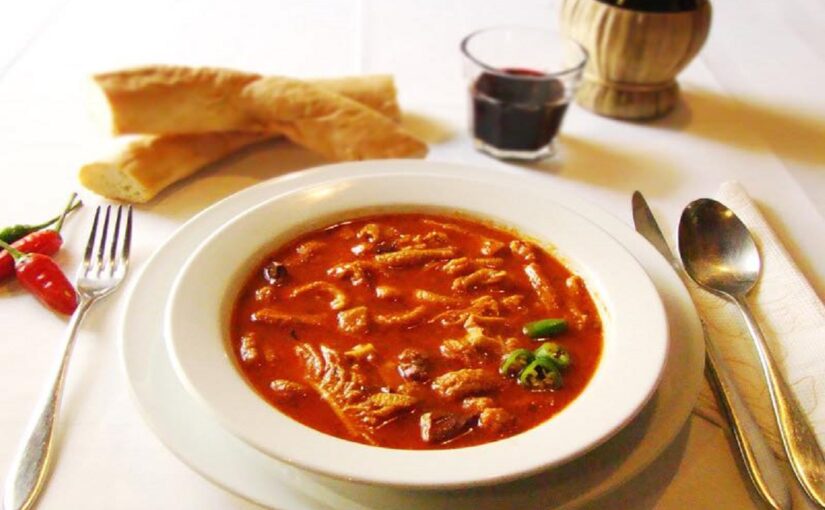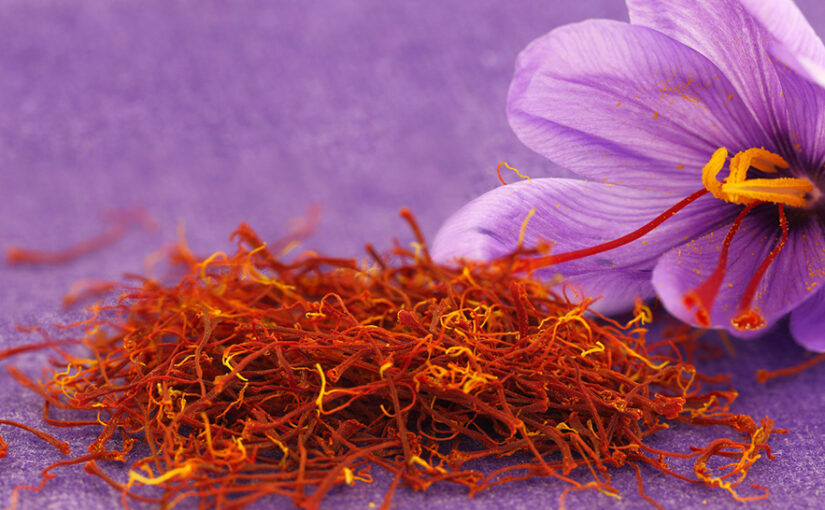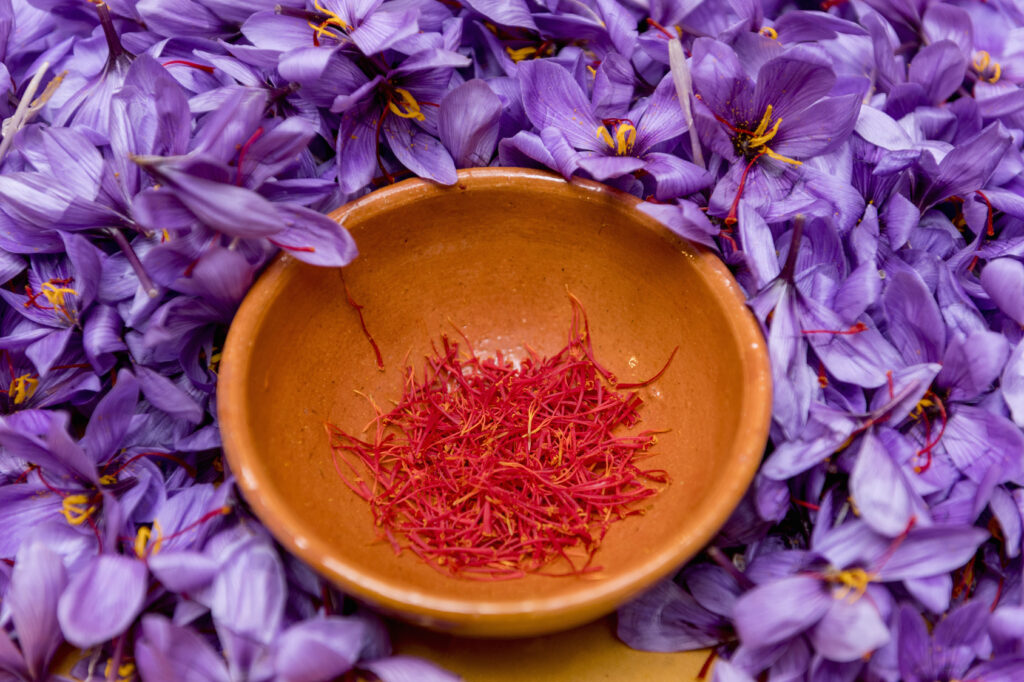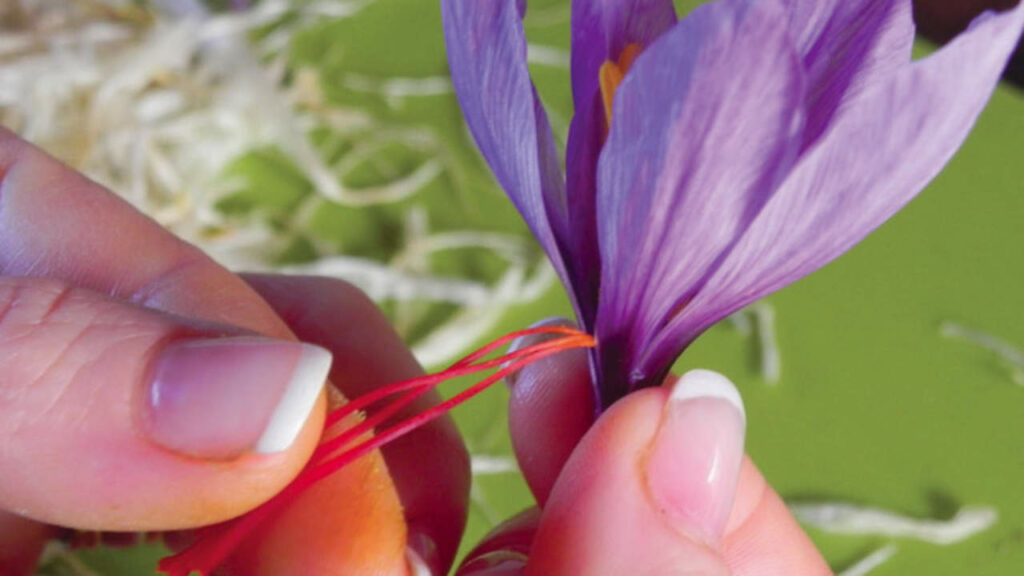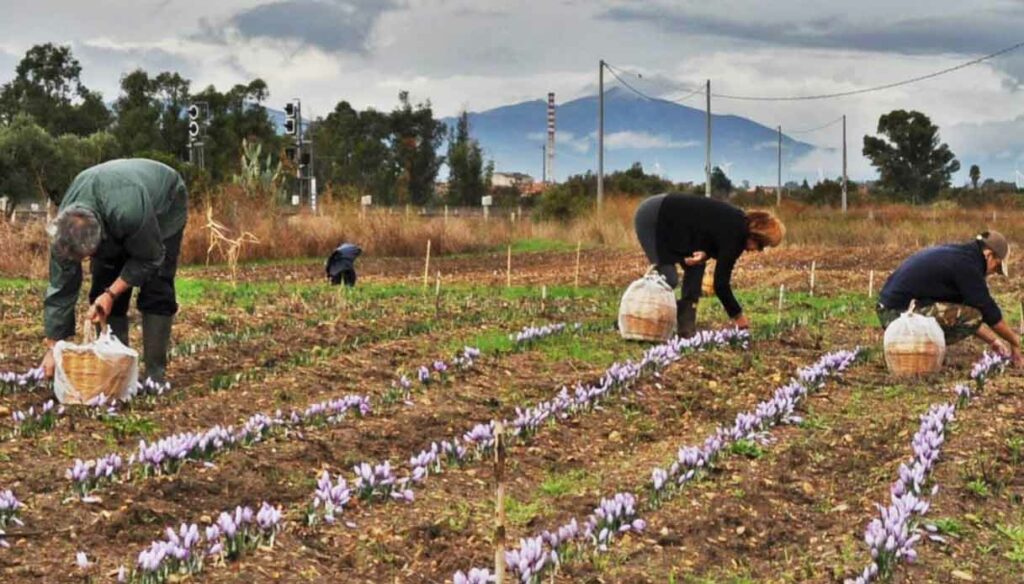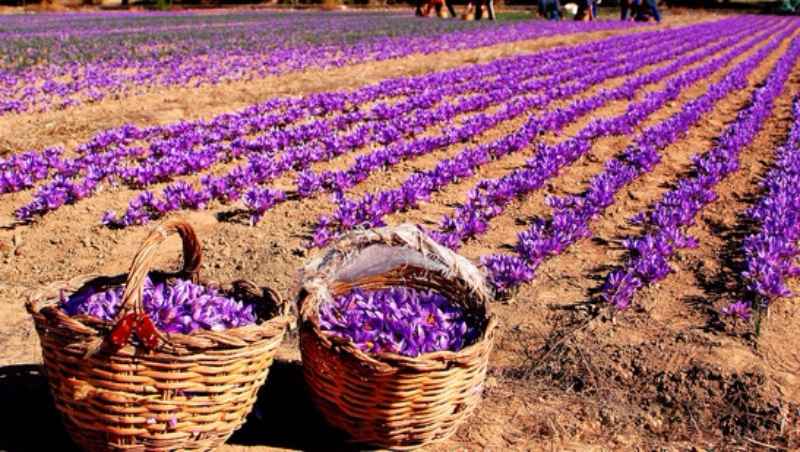02.03.2022
From North to South in Italy there are many gastronomic traditions linked to the culture of the fifth quarter: we are talking about the Morzello of Catanzaro, flat symbol of the cuisine of the capital city of Calabria. Poor cuisine has become gourmet: a return to the peasant world made of simple and genuine dishes but also very tasty, increasingly sought after and re-proposed by renowned restaurants and starred chefs.
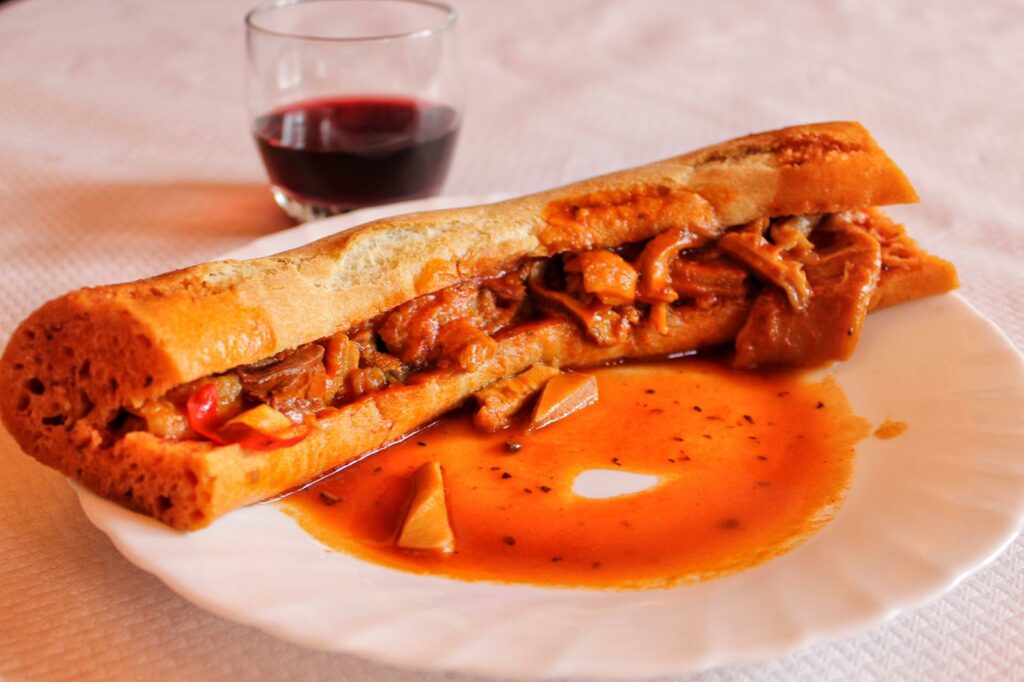
Perhaps the fifth quarter gastronomic culture is the best example evident of the revenge of these preparations which literally took transformed from scraps into delicacies. But what is meant by ‘fifth quarter’? The fifth quarter groups together everything that is not part of the four parts defined as “noble” (front and rear) of the meat of cattle, pigs and sheep.
The animal is split symmetrically into two parts and then back into another two; everything left over represents an extra quarter. The fifth quarter is therefore what is edible among offal, liver, heart, lungs, kidneys, small intestine and tripe (i.e. forestomach ). In addition to the internal organs we find the head, tongue, tail and legs. The fifth quarter also includes giblets from wild and poultry. delicacies for gentlemen, other than for poor cuisine.
Now “we also eat eyes and ears ”. So, with a clear turnaround, the fifth quarter is not only now it has become a fine food, but also a tale and an emblem of various regional cuisines and street Italian food. Morzello of Catanzaro is one of these.
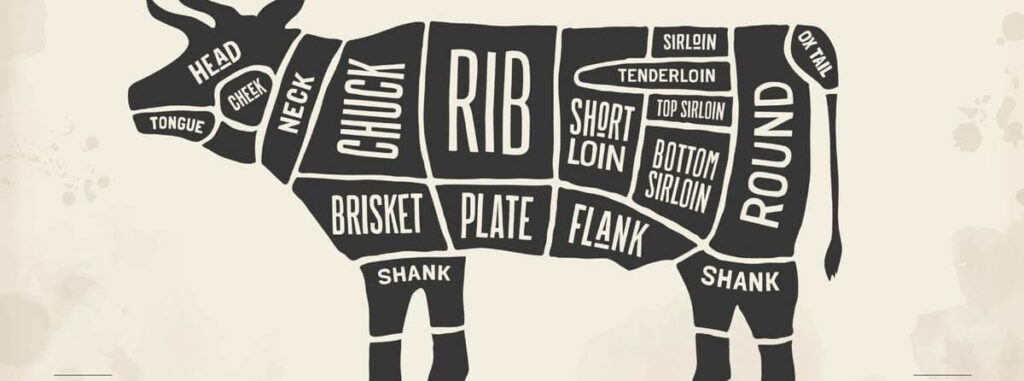
The morzello (in dialect ‘u morzeddhu catanzarisa) is the gastronomic pride of the capital city of Calabria. A very spicy and fragrant mixture of offal and parts of tripe of calf, the dijuneddhi, of which rumen, abomasum, reticulum and omasus (the so-called “centupezzi“), esophagus, lung, spleen and heart (optional) facts in small pieces. The morzello cooks slowly in a large tiana (large pot) in tomato, generally with bay leaf and oregano.
After having fooled for a few hours, once ready, it soaks in classic Catanzaro pitta. It is bread in the shape of a flattened donut, narrow and with very little crumb called ‘wagon wheel’, specially prepared by bakers. Morzello is eaten strictly hot, that is before it hardens.
It was traditionally the snack of the workers around 9-10 in the morning they refreshed themselves after the first efforts in the fields, in the streets, or in the ‘putiche‘ (shops called morzeddhara years ago). There are several opinions on its origins: there are those who think it was born at the time of the Spanish domination of the region and the roots are to be sought in the hinterland of Catanzaro.
The name morzeddhu would derive from the Latin past participle morsus, ‘bitten, eaten’. In Spanish almuerzo, is the mid-morning meal (from admordium, composed of ad more bite); also in Spain there are dishes based on offal called morzilli.
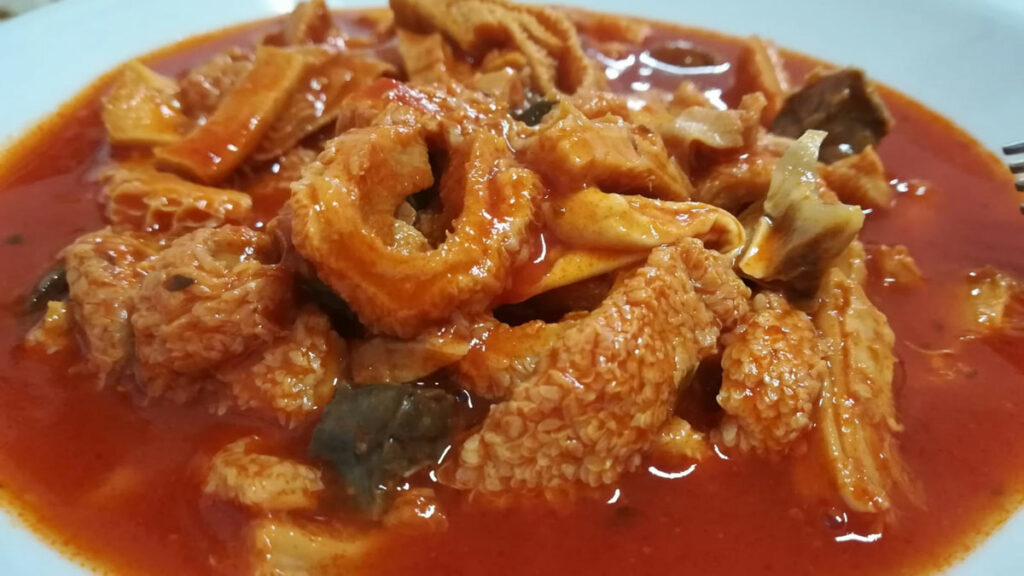
In this regard, the linguist Gerard Rohlfs (Rohlfs 1977, p. 444) translates with mursiellu (murziellu, mursillu, murzeju, morsiellu, murzeddu etc.). ‘The frugal breakfast that farmers have in the early hours of the morning’.
Always the Rohlfs with morzeddhu then also indicates the calf entrails. Morsello then in the Italian vocabulary is a piece of food, a bocconcino (in French morsel) and in Catanzaro dialect morzha morzha really wants “a small pieces”, such as those of morzello. In many Calabrian dialects the term morzu (muorzo, morsu, muorzu) means ‘bite, piece, squat’ (nu morzu and pane’).

SMAF LTD
Explore our products, coming from CALABRIA. Order the food and beverage products that allow you to explore the Mediterranean diet of a remarkable region. Surrounded by two seas and adorned with pine forests, mysterious villages, natural habitats, and rich biodiversity. Discover handcrafted delicacies that embody the soul of the land: sun-ripened fruits, premium olive oils, bold wines, artisanal cheeses, and traditional cured meats, all crafted with passion and authenticity.
Others believe that the morzello can date back to the period of domination of Saracen, between the ninth and tenth centuries, or coming from Jewish culture. Popular folklore tells a legend about the birth of the morzello , told by the Borgese poet and writer Achille Curcio in the early years of ‘900. It speaks of a poor woman from Catanzaro who lived in the Tùvulu district, Chicchina.
Widowed with two children to support, she was during the Christmas holidays in charge of cleaning up the courtyard where the animals were slaughtered. Having nothing to eat for the holidays, he collected all the leftovers from the meat, took them home and cooking them with other ingredients like soup, giving birth to the morzello.
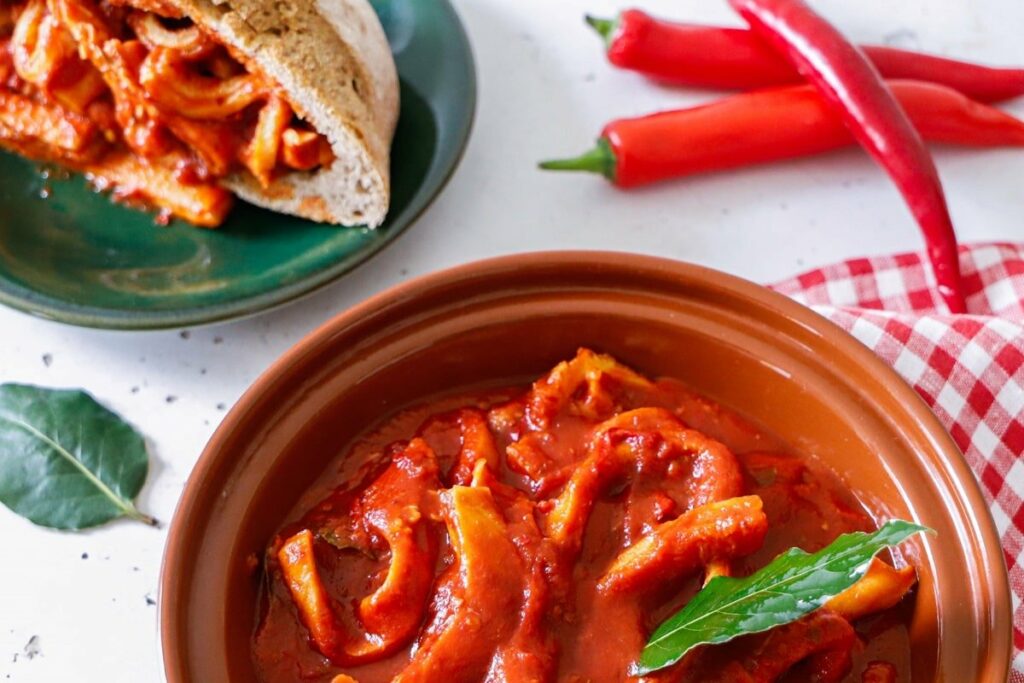
Another protagonist is the ancient pitta: in vulgar Greek it is πίττα, in Serbian pita and in Albanian pite and for everyone it is a focaccia, a flatbread of bread; some think it comes from the Latin picta , meaning “painted”.
In some areas of Catanzaro they also call it cuddhura; that casareccia is made with wheat flour and was once exposed, tied to a wall or door, in front of inns to call customers back, as if to say “Here we eat and drink well”. To eat morzello you used to follow some rules: the pitta is divided into four parts which are then opened halfway, but not completely, like if it were a pocket. Then you have to soak the inside of the pitta with a little sauce, fill it with meat and after having wet the two sides, you can finally eat.
The people of Catanzaro like to say that “‘u brodu t’à dde school gargi gargi” that is, that the gravy must drain from the sides of the mouth at the first bite given to the sandwich. The poet Giovanni Sinatora defines him as the illustrissimu morzeddhu, sovereign undisputed of the now few taverns and trattorias in the city (the old ‘putiche’) we can define it as a real social dish that yes handed down from generation to generation.
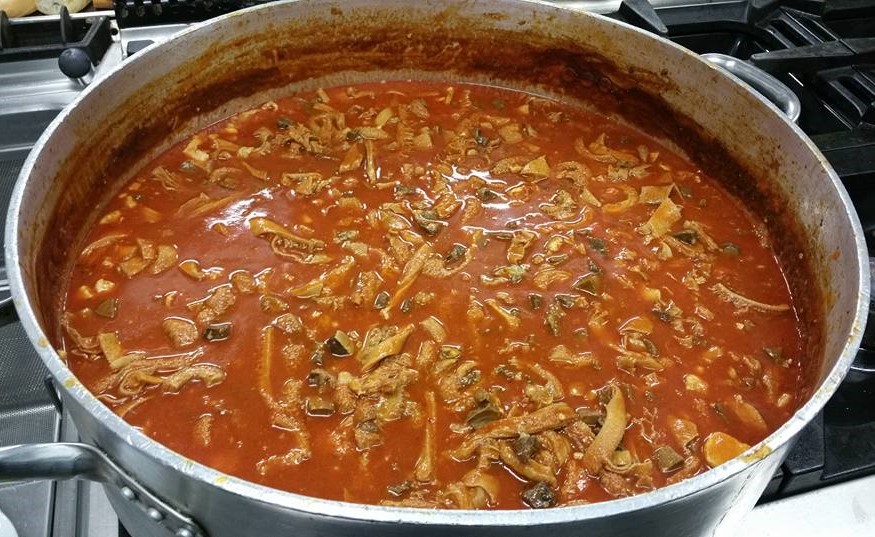
For years, it has represented a symbol of identity and sharing, which recalls the rituality of food that unites us so much. Morzello is that street food that unites all peoples, above all of the Mediterranean: food is prepared, sold and consumed outdoors and col its smell that spreads through the streets attracts all passers-by. In Catanzaro, sauté is also prepared, ‘u suffrittu, made with meat pork (leg, bacon, heart, lungs, tongue and liver) made a small pieces.
It is fried and cooked in red wine with the addition of oregano, chilli, tomato concentrate, bay leaf and salt and always goes with the pitta. During Lent, and especially on Good Friday, the alternative is being prepared of the morzello of meat, that of cod. In the families of the capital, morzello is consumed on New Year’s Eve.
The fifth quarter and its tradition, as we said, are somewhat rooted everywhere in Italy. In Turin we find the Piedmontese financier, a mixture of offal from beef and chicken, in Florence the legendary lampredotto sandwich, in Rome there are succulent pajata and in Palermo the most famous of the streets food, the pani ca ‘meusa.

